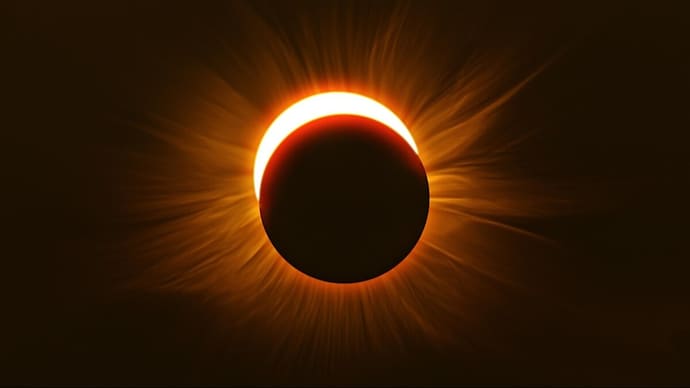
Total Solar Eclipse: Nasa will launch three rockets into Moon's shadow
The sounding rockets will be launched at strategic intervals: 45 minutes before, during, and 45 minutes after the peak of the eclipse.

In Short
- The rockets are expected to reach an altitude of 400 kilometers
- Each rocket will deploy four secondary instruments
- They will effectively multiply the data gathered as if from fifteen rockets
Nasa is set to launch three sounding rockets into the moon's shadow during the Total Solar Eclipse on April 8.
This mission, known as the Atmospheric Perturbations around Eclipse Path (APEP), aims to shed light on how the sudden dimming of sunlight affects Earth's upper atmosphere, particularly the ionosphere.
Launching from Nasa’s Wallops Flight Facility in Virginia, these rockets are part of a sophisticated experiment designed to study the disturbances created when the Moon eclipses the Sun.
Previously launched and successfully recovered during the October 2023 annular solar eclipse at White Sands Test Facility in New Mexico, these rockets have been refurbished with new instrumentation for their upcoming mission. Under the leadership of Aroh Barjatya, a professor of engineering physics at Embry-Riddle Aeronautical University, the APEP mission seeks to unravel the complexities of the ionosphere — a critical layer of our atmosphere that plays a pivotal role in modern communication.
The sounding rockets will be launched at strategic intervals: 45 minutes before, during, and 45 minutes after the peak of the eclipse. This timing is crucial for capturing data on how the eclipse-induced darkness impacts the ionosphere, potentially affecting radio communications and satellite operations.
The ionosphere, an electrified region located between 55 to 310 miles above Earth, reflects and refracts radio signals, making its study essential for ensuring the reliability of our communication networks.

Barjatya emphasises the importance of understanding and modelling the ionosphere to mitigate disturbances in our increasingly communication-dependent society. The challenge lies in the ionosphere's dynamic nature, influenced by both terrestrial and space weather, which makes predicting its state a complex task.
The APEP rockets are expected to reach an altitude of 400 kilometres, measuring charged and neutral particle density along with electric and magnetic fields.
Each rocket will deploy four secondary instruments, effectively multiplying the data gathered as if from fifteen rockets. This innovative approach, combined with ground-based measurements and high-altitude balloons deployed by teams across the US, aims to provide a comprehensive view of ionospheric dynamics.
As the eclipse casts its shadow, triggering atmospheric waves and perturbations, the data collected will aid scientists in refining models to predict potential communication disturbances.
